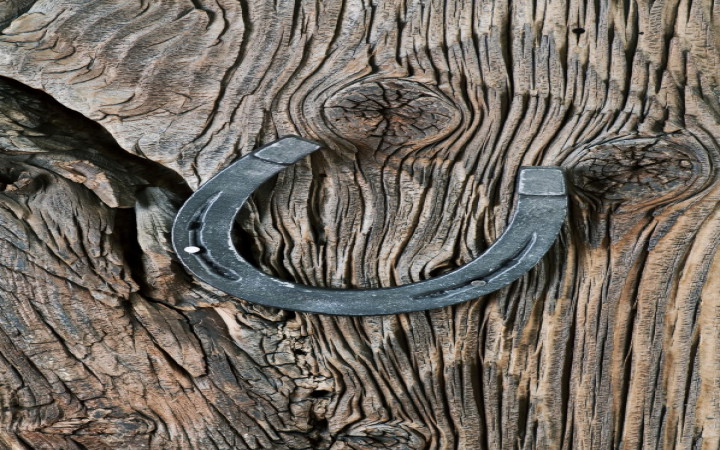Do you like to play games outdoors during picnics? In addition to games such as cornhole and tag, you might have also played a game that challenges you to toss a curved piece of a long distance toward a spike. What are we talking about? Horseshoes, of course!
That curved piece of you throw, known as a horseshoe, might also hang on a wall of your house, since the horseshoe has been considered a symbol of good luck for ages. What we often forget in the midst of thinking of horseshoes as lucky charms and game pieces is that these curved pieces of are actually important and practical tools.
What kind of tools are they? Just ask a horse. They're shoes! Obviously, they look quite different than the shoes humans wear, but that's to be expected. After all, wouldn't a horse look funny wearing tennis shoes? Horses don't even play tennis!
But have you ever WONDERed why horses even wear shoes? After all, it's not a common occurrence on the farm. Here on the Wonderopolis farm, we have pigs, geese, cows, sheep, and goats, in addition to horses, and guess what? None of the other animals wear shoes!
So what's so special about horses? To answer that question, we have to start with the hoof. Horses are large, strong animals that are able to run quickly and do lots of work on the farm. To help protect their legs and provide shock absorbency when their heavy bodies move, horses have thick, tough hooves.
Horse hooves are made of a tough protein called keratin. It's the same tough protein that your hair and fingernails are made of. In horse hooves, though, keratin exists in multiple, thick layers to make hooves exceptionally strong.
Like your hair and fingernails, horse hooves keep growing all the time. In fact, horses grow the equivalent of a new hoof about once each year. The first people to ride and farm with horses realized over 2,000 years ago that hard work wore down horse hooves faster than they could grow.
To alleviate problems from worn hooves, horseshoes were invented. Thin, horseshoes attached to hooves help to slow down the rate at which the hooves wear down. They also provide additional shock absorbency, as well as added traction to help horses to walk, run, and work with more confidence.
Today, a professional known as a farrier puts horseshoes on. Horseshoes can be made of many materials, including steel, aluminum, and even titanium. A farrier customizes the fit of each horseshoe to fit each hoof as perfectly as possible.
Most horseshoes are attached with small nails that go through the horseshoe into the outer part of the hoof. Since there are no nerve endings in the outer section of the hoof, a horse doesn't feel any pain when horseshoes are nailed on. Since their hooves continue to grow even with horseshoes on, a farrier will need to trim, adjust, and reset a horse's shoes on a regular basis.





